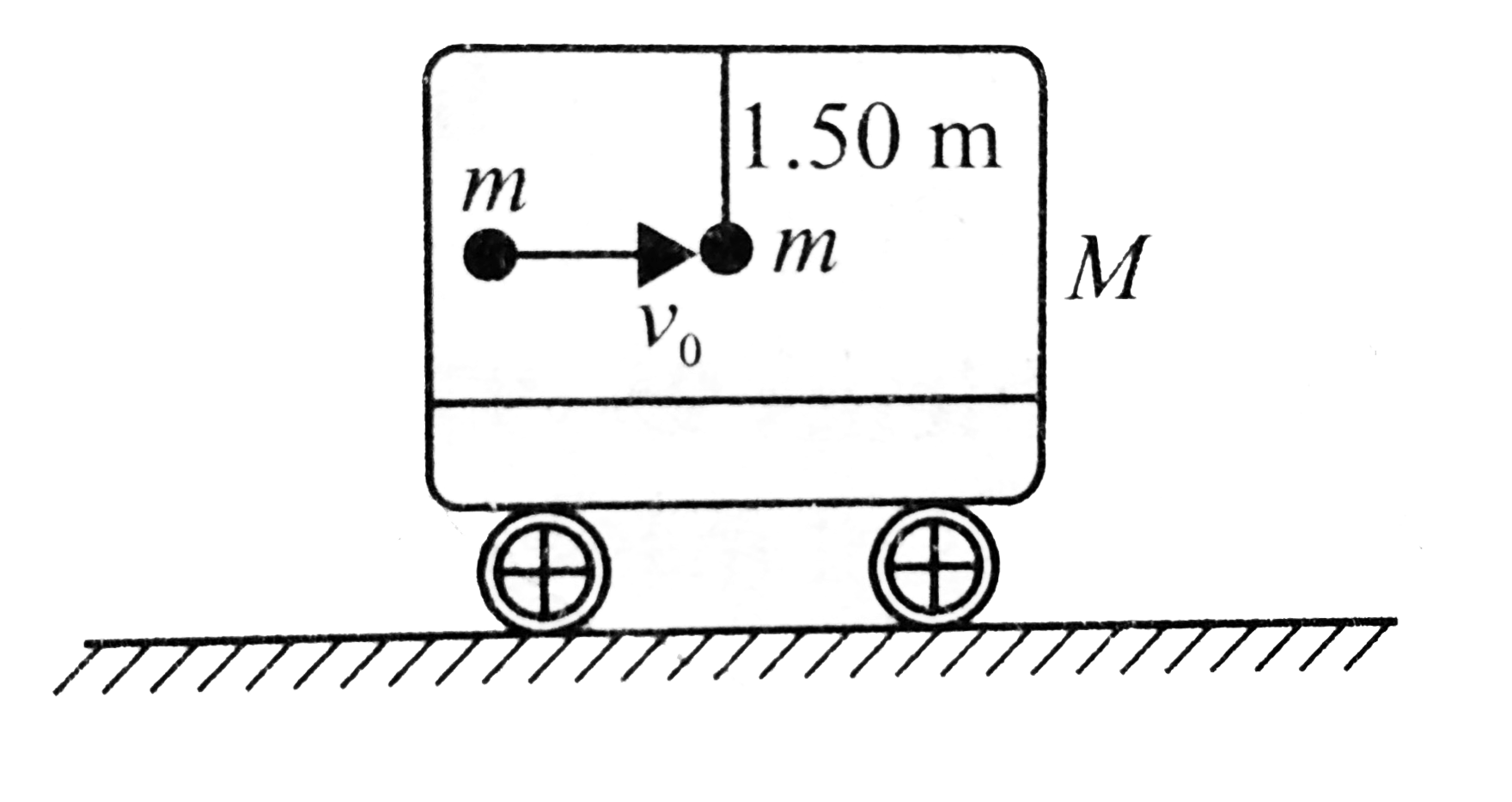Four smooth steel balls of equal mass at rest are free to move along a straight line without friction. The first ball is given a velocity of 0.4 m/s . It collides head on with the second elastically, the second one similarly with the third and so on. The velocity of the last ball is
In an elastic head on collision, of two equal masses their kinetic energies or velocities are exchanged. Hence when the first ball collides with the second ball at rest, the second ball attains thespeed of 0.4 m/s and the first ball comes to rest. This process continues. Thus the velocity of the last ball is 0.4ms−1.
Topper's Solved these Questions
- BOOK - DISHA PUBLICATIONCHAPTER - CHAPTERWISE NUMERIC /INTEGER ANSWER QUESTIONSEXERCISE - CHAPTER 6 (SYSTEM OF PARTICLES AND ROTATIONAL MOTION)14videos
CHAPTERWISE NUMERIC /INTEGER ANSWER QUESTIONS
- BOOK - DISHA PUBLICATIONCHAPTER - CHAPTERWISE NUMERIC /INTEGER ANSWER QUESTIONSEXERCISE - CHAPTER -7 (GRAVITATION)15videos
CHAPTERWISE NUMERIC /INTEGER ANSWER QUESTIONS
- BOOK - DISHA PUBLICATIONCHAPTER - CHAPTERWISE NUMERIC /INTEGER ANSWER QUESTIONSEXERCISE - CHAPTER -4 (LAWS OF MOTION)15videos
CHAPTERWISE NUMERIC /INTEGER ANSWER QUESTIONS
- BOOK - DISHA PUBLICATIONCHAPTER - ATOMSEXERCISE - EXERCISE-2: CONCEPT APPLICATOR30videos
ATOMS
- BOOK - DISHA PUBLICATIONCHAPTER - COMMUNICATION SYSTEM EXERCISE - EXERCISE-2 : Concept Applicator30videos
COMMUNICATION SYSTEM
Similar Questions
Three balls of masses m1,m2 and m3 are lying in a straight line. The first ball is moved with a certain velocity so that it strikes the second ball directly and itself comes to rest. The second ball collides with the third and is itself reduced to rest. If e is the coefficient of restitution for each ball, write down the relation of m3 in terms of m1 and m2.
View SolutionA ball of mass m moving with velocity v collides head on elastically with another identical ball moving with velocity - V. After collision
View Solution
Knowledge Check
- Question 1 - Select One
Four smooth steel balls of equal mass at rest are free to move along as straight line without friction. The first ball is given a velocity of 0.4m/s It colloids head on with the second elastically, the second one similarly with the third and so on. the velocity of the last ball is :
A0.4m/sB0.2m/sC0.1m/sD0.05m/s - Question 2 - Select One
Four smooth steel balls of equal mass at rest are free to move along as straight line without friction. The first ball is given a velocity of 0.4m/s It colloids head on with the second elastically, the second one similarly with the third and so on. the velocity of the last ball is :
A0.4m/sB0.2m/sC0.1m/sD0.05m/s - Question 3 - Select One
A ball of mass in m=1kg is hung vertically by a thread of length l=1.50m. Upper end of the thread is attached to the ceiling of a trolley of mass M=4kg. Initially, the trolley is stationary and it is free to move along horizontal rails without friction. A shell of mass m=1 kg, moving horizontally with velocity v0=6m/s collides with the ball and gets stuck with it. As a result, the thread starts to deflect towards right.

The velocity of the combined body just after collision isA2m/sB3m/sC1m/sD4m/s
Three balls of masses m1,m2,m3 are lying in a straight line. The first ball is moved with a certain velocity so that it strikes the second ball directly, then the second ball collides with the third. If the coefficient of elasticity for each ball is e and after impact first ball comes to rest, while after second impact the second ball comes to rest. Then m1,m2,m3 are in
View SolutionA steel ball of radius 2cm is at rest on a frictionless surface. Another ball of radius 4cm moving at a velocity of 81cm/sec collides elastically with first ball. After collision the smaller ball moves with speed of
View SolutionThe first ball of mass m moving with a velocity u collides head on with the second ball of mass m at rest. If the coefficient of restitution is e, the ratio of final velocity of the second ball to the initial velocity of the first ball is
View SolutionA steel ball of radius 2cm is at rest on a frictionless surface. Another ball of radius 4cm moving at a velocity of 81cm/see collides elast cally with first ball. After collision the smaller ball moves with speed of
View SolutionA steel ball of radius 2cm is initially at rest. It is struck head on by another stell ball of radius 4cm travelling with a velocity of 81cm/s. If the collision is elastic their respective final velocities are
View Solution

